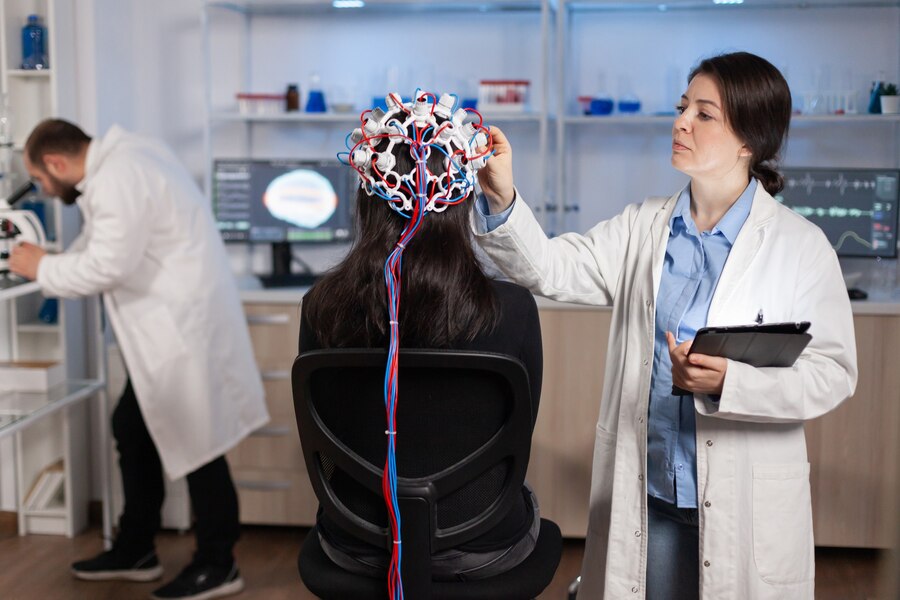Modern and Integrative Approaches



Biofeedback
Biofeedback is the use of signals from your own body to improve your health. If you’ve stepped on a scale or taken your temperature, for example, you’ve received “feed back” information that you then perhaps acted on.A therapist may use more advanced biofeedback techniques to help clients suffering from anxiety, stress, or tension headaches. One such technique uses a machine that picks up electrical signals in the muscles. As the client tries to relax their muscles, they can get an immediate progress report by watching the speed of the signals, and thus learn how to better control their mind and body.
Coaching
Life coaching is an increasingly popular profession that has no specific licensing or academic requirements. Though psychologists also often consider themselves life coaches, these therapists don’t focus on treating mental illness. Instead, they help individuals realize their goals in work and in life. An executive coach, for example, may be enlisted to help a chief executive become a better manager, while a “love” coach may map out a plan to help a client find romantic fulfillment.






Dialectical Behavior (DBT)
Dialectical Behavior Therapy (DBT) is the treatment most closely associated with Borderline Personality Disorder (BPD). Therapists practice DBT in both individual and group sessions. The therapy combines elements of CBT to help with regulating emotion through distress tolerance and mindfulness. The goal of Dialectical Behavior Therapy is to alleviate the intense emotional pain associated with BPD.
Emotionally Focused
Emotionally Focused Therapy (EFT) is an approach to therapy that helps clients identify their emotions, learn to explore and experience them, to understand them and then to manage them. Emotionally Focused Therapy embraces the idea that emotions can be changed, first by arriving at or ‘living’ the maladaptive emotion (e.g. loss, fear or shame) in session, and then learning to transform it. Emotionally Focused Therapy for couples seeks to break the negative emotion cycles within relationships, emphasising the importance of the attachment bond between couples, and how nurturing of the attachment bonds and an empathetic understanding of each others emotions can break the cycles.






Hypnotherapy
Hypnotherapy focuses on hypnosis, the Greek term for sleep. The practice uses exercises that relax people, bringing them to an altered state of consciousness. This process focuses on mastering self-awareness. Through trance-like analysis, hypnosis decreases blood pressure and heart rate, putting one’s physical body at ease. Working with memories, hypnotherapy helps a person to reframe, relax, absorb, dissociate, respond, and reflect. The process reconstructs healthier associations with a person’s past events. Dealing with a wide range of conditions, such as anxiety and depression, people become responsive to new solutions that can lead to personal development through hypnotherapy.
Mindfulness-Based (MBCT)
For clients with chronic pain, hypertension, heart disease, cancer, and other health issues such as anxiety and depression, mindfulness-based cognitive therapy, or MBCT, is a two-part therapy that aims to reduce stress, manage pain, and embrace the freedom to respond to situations by choice. MCBT blends two disciplines–cognitive therapy and mindfulness. Mindfulness helps by reflecting on moments and thoughts without passing judgment. MBCT clients pay close attention to their feelings to reach an objective mindset, thus viewing and combating life’s unpleasant occurrences.






Motivational Interviewing
Motivational Interviewing (MI) is a method of therapy that works to engage the motivation of clients to change their behavior. Clients are encouraged to explore and confront their ambivalence. Therapists attempt to influence their clients to consider making changes, rather than non-directively explore themselves. Motivational Interviewing is frequently used in cases of problem drinking or mild addictions.
Neuro-Linguistic (NLP)
Neuro-Linguistic therapy assumes there is a connection between the mind’s processes (“neuro”), language (“linguistic”) and behavioral patterns learned through experience (“programming”) and that these can be changed to achieve specific goals. A neuro linguistic therapist analyzes the detail of the client’s words and phrases used to describe their presenting issues in order to understand the underlying cause. Therapists will then help remodel the client’s thoughts and associations in order to reframe or re-progam their preconceptions for better outcomes.






Neuro-Linguistic (NLP)
Neuro-Linguistic therapy assumes there is a connection between the mind’s processes (“neuro”), language (“linguistic”) and behavioral patterns learned through experience (“programming”) and that these can be changed to achieve specific goals. A neuro linguistic therapist analyzes the detail of the client’s words and phrases used to describe their presenting issues in order to understand the underlying cause. Therapists will then help remodel the client’s thoughts and associations in order to reframe or re-progam their preconceptions for better outcomes.
Positive Psychology
Unlike traditional psychology that focuses more on the causes and symptoms of mental illnesses and emotional disturbances, positive psychology emphasizes traits, thinking patterns, behaviors, and experiences that are forward-thinking and can help improve the quality of a person’s day-to-day life. These may include optimism, spirituality, hopefulness, happiness, creativity, perseverance, justice, and the practice of free will. It is an exploration of one’s strengths, rather than one’s weaknesses. The goal of positive psychology is not to replace those traditional forms of therapy that centre on negative experiences, but instead to expand and give more balance to the therapeutic process.






Prolonged Exposure Therapy
PET is a form of psychotherapy for post-traumatic stress disorder (PTSD).
Solution Focused Brief (SFBT)
Solution-focused therapy, sometimes called “brief therapy,” focuses on what clients would like to achieve through therapy rather than on their troubles or mental health issues. The therapist will help the client envision a desirable future, and then map out the small and large changes necessary for the client to undergo to realize their vision. The therapist will seize on any successes the client experiences, to encourage them to build on their strengths rather than dwell on their problems or limitations.



